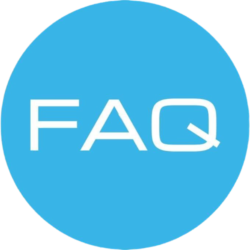Ericsson Mobility Report: Global 5G growth continues
- 5G mobile subscriptions are growing in every region and forecast to top 1.5 billion globally by the end of 2023
- Continued revenue growth in leading 5G markets
- Mobile data traffic continues to grow strongly in Southeast Asia and Oceania, expected to reach around 54 GB/month in 2028
Despite geopolitical challenges and macroeconomic slowdown in some markets, communications service providers worldwide are continuing to invest in 5G, the June 2023 edition of the Ericsson (NASDAQ: ERIC) Mobility Report shows.
Mobile data traffic per smartphone in Southeast Asia and Oceania continues to grow strongly in Southeast Asia and Oceania and is expected to reach around 54 GB per month in 2028 – a CAGR of 24 percent. Total mobile data traffic is estimated to grow from around 13 EB per month in 2022 to 55 EB per month in 2028, growing at a CAGR of 27 percent.
5G subscriptions are forecast to reach around 430 million by the end of 2028 and will contribute 34% of all mobile subscriptions in the region by that time. In terms of 5G coverage, by the end of 2022:
- 5G was available to around 50 percent of the population in Malaysia and 66 percent in the Philippines.
- More than 80 percent of the population in Australia and Thailand had access to 5G
- Singapore achieved more than 95 percent coverage by mid-2022
The number of smartphone subscriptions in the region is projected to grow at a CAGR of 3 percent, reaching over 1.12 billion by 2028 from 930 million at the end of 2022. 4G is also showing growth with subscriptions expected to reach 770 million in 2028 from 640 million at the end of 2022 – a CAGR of 3%.
Following the launch of 5G services in October 2022, the major 5G Indian market is witnessing huge network deployments under its Digital India initiative. 5G subscriptions in India reached about 10 million by end of 2022 and are estimated to account for about 57 percent of mobile subscriptions in the country by the end of 2028, making it the fastest growing 5G region globally.
The latest Ericsson Mobility Report also reveals that the uptake of 5G subscriptions in North America has been stronger than expected in previous forecasts. At the end of 2022, the region had the highest 5G global subscription penetration at 41 percent.
5G subscriptions are rising in every region worldwide and forecast to reach 1.5 billion by the end of 2023. Global mobile network data traffic continues to grow with the monthly global average usage per smartphone expected to exceed 20 GB by the end of 2023.
The report also shows continued revenue growth in leading 5G markets. Fredrik Jejdling, Executive Vice President and Head of Networks, Ericsson, says: “The global adoption of 5G technology has surpassed one billion subscriptions, bringing positive revenue growth for communications service providers in leading 5G markets. We see a strong link between the increase in 5G subscriptions and service revenue. Over the past two years, the introduction of 5G services in the top twenty markets has resulted in a seven percent revenue boost. This trend shows the growing value of 5G, benefiting users and service providers alike.”
Igor Maurell, Head of Ericsson Thailand states, “As a long term and trusted connectivity provider in Thailand, Ericsson will continue to work with Service Providers to ensure successful coverage and capacity deployments with resilient network performance, scalability, simplicity, and security as a primary focus. We are also working closely with key Communications service providers in the country, the Government as well as industry and academia to develop the 5G eco system in the country so that the country’s Thailand 4.0 Vision is achieved.”
Worldwide, around 240 communications service providers (CSPs) have launched commercial 5G services and about 35 have deployed or launched 5G standalone (SA). The most common 5G services launched by service providers for consumers are enhanced mobile broadband (eMBB), Fixed Wireless Access (FWA), gaming and some AR/VR-based services, such as training and education.
The report also reveals that 5G continues to drive innovation in mobile service packaging. Among CSPs, it is increasingly common to offer bundles with various popular entertainment services included such as television, music streaming or cloud gaming platforms. About 58 percent of 5G service providers currently do this in various forms.
More than 100 CSPs, comprising about 40 percent of FWA service providers, currently offer FWA over 5G.
FWA is growing solidly in terms of:
- Number of mobile service providers offering FWA
- Proportion of those offering FWA over 5G
- Proportion of CSPs with speed-based tariff structures
- Amount of traffic served, as both number of connections and traffic volume per connection increase.
By 2028 5G is estimated to account for almost 80 percent of all FWA connections.
The June 2023 Ericsson Mobility Report includes four in-depth articles:
- Exploring how traffic patterns drive network evolution
- Exploring differentiated service with 5G networks
- AR uptake enabled by mobile networks
- Mobile quality of experience: Network readiness for new services





